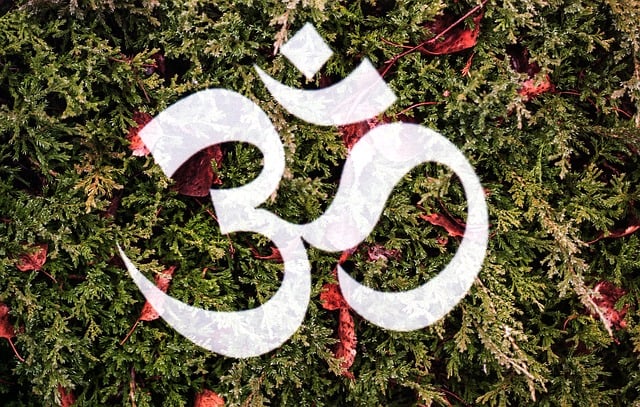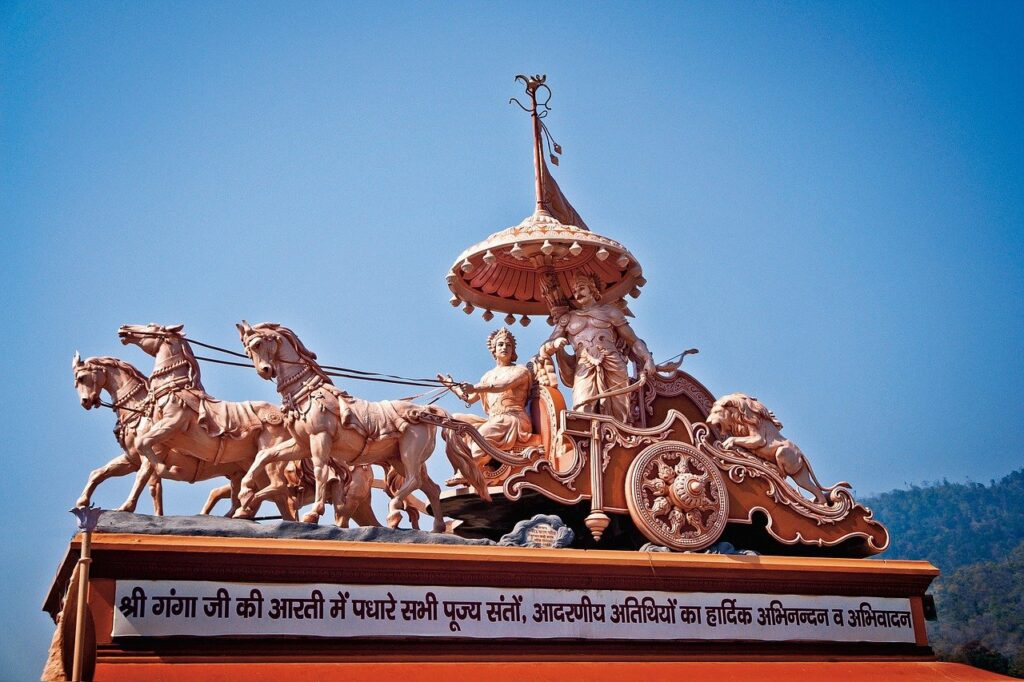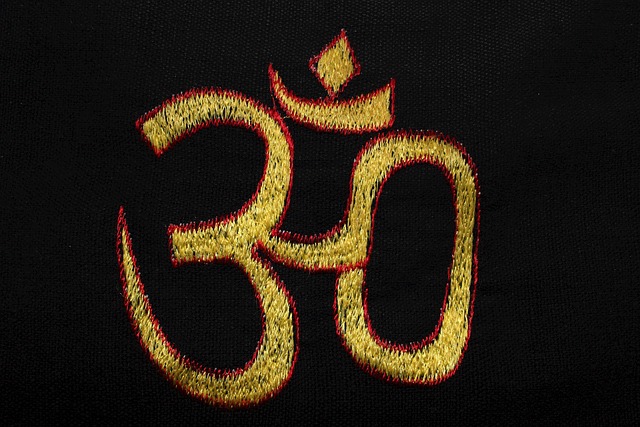
‘Om’ or ‘Aum’ holds immense significance in Hinduism as it embodies the primal sound of creation and the original vibration of the cosmos. Composed of three syllables (A-U-M), it symbolizes the different states of consciousness, namely waking, dreaming, and deep sleep, with the fourth state being the realization of one’s spiritual identity. The visual representation of Om symbol also reflects these states and represents enlightenment beyond material consciousness. This article will delve into the significance and meaning of the Hindu symbol OM. By chanting Om, an individual can synchronize their frequency with that of the universe, thereby leading to spiritual growth. Moreover, Om is believed to be the sound manifestation of the Supreme Lord and is hence chanted at the outset of several Hindu prayers and rituals. It is customary to begin any sacred recitation or Sanskrit prayer with the chanting of Om.
Om is the Akshara, or imperishable syllable. Om is the Universe, and this is the exposition of Om. The past, the present and the future, all that was, all that is, all that will be, is Om. Likewise, all else that may exist beyond the bounds of time, that too is Om. – Mandukya Upanishad
Om: The Sacred Sound Unveiling the Essence of Existence
Om is the sacred sound of Brahman and holds great significance in Hinduism. The most powerful Vedic verse is Pranava or OM, a single-syllable incantation meaning “That by which God is effectively praised” and “That which is ever new.” Pranava or Om is universally recognized as the symbol of Hinduism and Vedic culture. Chanting Om helps overcome one’s beastly nature. The Yajur-Veda urges realization of Brahman through repetition and remembrance of Om. The Kathopanishad states that Om is Parabrahman itself, and the Mandukyopanishad advises meditating on the unity of Atman and Brahman using Om. Lord Krishna in the Bhagavad gita identifies Himself as Om (pranavah sarva vedesu) , and chanting Om at the time of death with contemplation of God leads to the highest Truth. The Yoga Sutras of Patanjali declare Om as the symbol of God and a path to Samadhi. Om is used in invocation, worship, and religious ceremonies, representing the trinity and transcendence. AUM comprises three letters—A, U, and M—representing creation, progress, and dissolution. Om is considered the primal sound of God. Om has parallels in other traditions, such as “hum,” “amin,” and “amen.” The biblical passage in John 1:1 connects the Word with God. Om expresses the ultimate reality and the cosmic pulse according to ancient Indian traditions.
The practice of chanting “Omkara” is typically associated with those who are immersed in the mystic yoga process. Nevertheless, anyone who recites Vedic verses will inherently chant “Om” since it frequently serves as the foundational or seed mantra at the outset of numerous such verses and other mantras. By intoning “Om” and attaining precise control over one’s breath, primarily a mechanical method for stabilizing the mind, individuals can eventually enter a state of trance or samadhi. This systematic approach gradually transforms the inclinations of a mind deeply absorbed in material concerns and elevates it towards a spiritualized state.
OM – Association with states of wakefulness, sleep, dream, and enlightenment
The Om symbol embodies different states of reality with each of its visual aspects. The large lower curve represents the waking state, where the mind is connected to the physical body and the world is perceived through the senses. The upper curve denotes the state of deep sleep, in which the mind is withdrawn from all activities. The middle curve signifies the dream state, where the subconscious is explored and consciousness is turned inwards. The dot symbolizes enlightenment, where a person recognizes the spiritual nature of creation and unites with the Absolute. The crescent represents maya, the illusion that binds the soul to the material world. Chanting Om can help transcend the three curves of material consciousness and reach enlightenment.
Om – invokes the Supreme Lord
The sacred sound of Om is identical to the Supreme Lord, and chanting it confers all auspiciousness. Within the Bhakti tradition of Hinduism, chanting Om is believed to be equivalent to the chanting of “Hare Krishna,” where a devotee entreats the Supreme Lord to engage them in His devotional service. Krishna says in Bhagavad Gita –

maharsinam bhrgur aham
giram asmy ekam aksaram
yajnanam japa-yajno ‘smi
sthavaranam himalayah
(Bhagavad Gita 10.25)
–
Of the great sages I (Krishna) am Bhrigu, Among all sound vibrations, I am the sacred syllable Om, Of all types of sacrifices, I am the chanting of the holy names [japa], and of immovable objects I am the Himalayas.
Om’s essence is unique and can be accessed by different people worldwide, much like an object portrayed in various ways by different painters. It is a common practice for Hindu yogis to conclude their meditations with the chanting of Om, while in Judeo-Christian traditions, the word “Amen” is used at the end of a prayer to evoke divine energy, and in Islamic tradition, “Amin” is used for the same purpose. Interestingly, even within Hinduism, the meaning and connotations of Om can be perceived in different ways. Although commonly written as “om” due to its repeated chanting, the sacred syllable’s original and more accurate spelling is “aum.”
Scientific research into the practice of chanting Om
The immense impact of sound vibrations on a person’s physical, emotional, and mental state is widely recognized. Chanting Om allows individuals to synchronize their frequency with the original universal frequency, which is a vital aspect of spiritual practice. Like how a magnet pulls iron towards it, a person can elevate their spiritual consciousness by aligning themselves with the spiritual energy of the Absolute through the reverberations of Om.

Om chanting has been the subject of numerous scientific studies, with some noteworthy findings. One study published in the Asian Journal of Psychiatry in 2018 revealed that Om chanting can induce relaxation by positively affecting the autonomic nervous system, which governs internal functions such as heart rate, blood pressure, and metabolism. The study also found that limbic brain regions, responsible for emotions, memories, and arousal, were deactivated during Om chanting. Another study conducted in 2022 concluded that traditional Om chanting is an effective way to calm the mind and enhance memory. A 2019 study showed that Om chanting can alter delta waves, similar to those present during deep sleep. They suggest that Om chanting could potentially be used as a treatment for major depressive disorder and offer scientific support for the positive effects many individuals experience from this practice.
According to scientific studies, the mental repetition of Om can lead to a physiological state characterized by reduced alertness and increased sensitivity and synchronicity. These studies also found changes in specific levels of the auditory pathway, which suggest increased sensitivity to sensory transmission.
OM-invoking Hindu mantras and meanings
OM namo Bhagavate Vasudevaya – This mantra is a salutation to Lord Vishnu, and by chanting it, one can attain liberation and the divine abode of Lord Vishnu.
om ajnana timirandhasya jnananjana salakaya, chakshur unmilitam yena tasmai shri-gurave namah – With deep reverence, I pay my humble respects to my spiritual mentor who illuminated my once darkened mind with the beacon of knowledge.
Om tat sat – a Vedic mantra that represents the eternal absolute truth. ‘Tat’ refers to the Absolute Truth, and ‘Sat’ denotes perpetuity.

Om Namo Narayanaya – I offer my salutations to Narayana, the ultimate reality.
Om Namah Shivaya – This mantra is dedicated to Lord Shiva, and it means “I bow to Shiva”
Om Gam Ganapataye Namaha – My salutations to Lord Ganesha, the Lord of all beginnings
Om Shanti – Let there be peace
Om Sahana Vavatu – may we be protected together, may we be nourished together
Om Asato Ma Sadgamaya – lead me from ignorance to truth
Om Aim Saraswatyai Namaha – I offer my salutations to the great goddess Saraswati